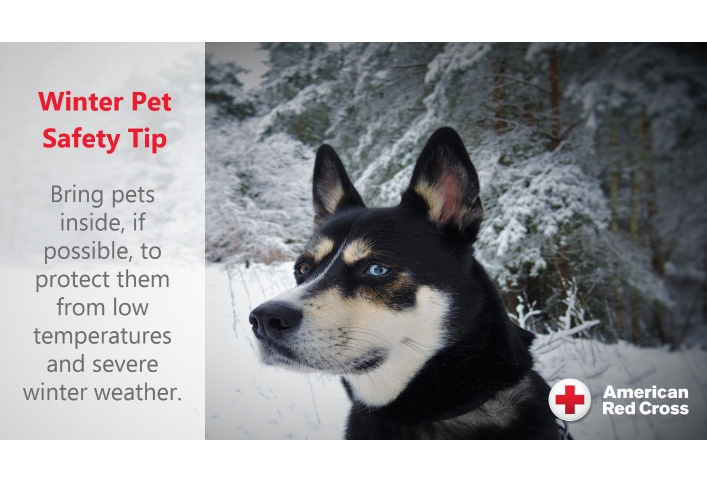
How to Prepare for a Winter Storm
Winter storms can range from a moderate snow over a few hours to a blizzard with blinding, wind-driven snow that lasts for several days. Some winter storms are large enough to affect several states, while others affect only a single community. Many winter storms are accompanied by dangerously low temperatures and sometimes by strong winds, icing, sleet and freezing rain.
Regardless of the severity of a winter storm, you should be prepared in order to remain safe during these events.
Put Together a Supply Kit
-
Water—at least a 3-day supply; one gallon per person per day
-
Food—at least a 3-day supply of non-perishable, easy-to-prepare food
-
Battery-powered or hand-crank radio (NOAA Weather Radio, if possible) [Available on the Red Cross Store]
-
Extra batteries
-
Medications (7-day supply) and medical items (hearing aids with extra batteries, glasses, contact lenses, syringes, etc.)
-
Multi-purpose tool
-
Sanitation and personal hygiene items
-
Copies of personal documents (medication list and pertinent medical information, proof of address, deed/lease to home, passports, birth certificates, insurance policies)
-
Cell phone with chargers
-
Family and emergency contact information
-
Extra cash
-
Baby supplies (bottles, formula, baby food, diapers)
-
Pet supplies (collar, leash, ID, food, carrier, bowl)
-
Tools/supplies for securing your home
-
Sand, rock salt or non-clumping kitty litter to make walkways and steps less slippery
-
Warm coats, gloves or mittens, hats, boots and extra blankets and warm clothing for all household members
-
Ample alternate heating methods such as fireplaces or wood- or coal-burning stoves
Remaining Safe During a Winter Storm
- Listen to a NOAA Weather Radio or other local news channels for critical information on snow storms and blizzards from the National Weather Service (NWS).
- Bring pets/companion animals inside during winter weather. Move other animals or livestock to sheltered areas and make sure that their access to food and water is not blocked by snow drifts, ice or other obstacles.
- Running water, even at a trickle, helps prevent pipes from freezing.
- All fuel-burning equipment should be vented to the outside and kept clear.
- Keep garage doors closed if there are water supply lines in the garage.
- Open kitchen and bathroom cabinet doors to allow warmer air to circulate around the plumbing. Be sure to move any harmful cleaners and household chemicals up out of the reach of children.
- Keep the thermostat set to the same temperature both during the day and at night. By temporarily suspending the use of lower nighttime temperatures, you may incur a higher heating bill, but you can prevent a much more costly repair job if pipes freeze and burst.
- Go to a designated public shelter if your home loses power or heat during periods of extreme cold.
- Avoid driving when conditions include sleet, freezing rain or drizzle, snow or dense fog. If travel is necessary, keep a disaster supplies kit in your vehicle.
- Before tackling strenuous tasks in cold temperatures, consider your physical condition, the weather factors and the nature of the task.
- Protect yourself from frostbite and hypothermia by wearing warm, loose-fitting, lightweight clothing in several layers. Stay indoors, if possible.
- Help people who require special assistance such as elderly people living alone, people with disabilities and children.
If you are in immediate need of help, please contact your local Red Cross or find an open shelter.